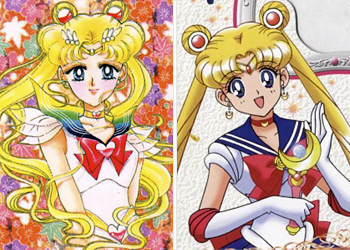
For this edition of Adaptation Analysis, we are jumping across the pond to Japan to distinguish the changes made to one of the most beloved “magical girl” series ever to hit the airwaves. Yes, I’m talking about Sailor Moon.
Like most anime, Sailor Moon was originally a manga (Japanese comic book) before being brought to the television. It later was translated into musical productions (I’m not kidding) and a live action TV series. This adaptation will just follow the manga to animated series, as those two followed a closer link than any further incarnation.
The manga series was written by Naoko Takeuchi and lasted from 1991-1995. The anime series was released shortly thereafter, and ran 1992-1997. By the end of the 90s, the first two series were (badly) dubbed for American audiences by DiC. After several years, two more seasons were dubbed. I should point out that if one is to EVER watch Sailor Moon, please… just bite the bullet and watch it subtitled. The dubs are terrible and mutilate any enjoyment one could find in the series. /end-rant.
The manga series consists of eighteen volumes (roughly 200+ pages each) and contains five full story arcs. One manga (between arcs 4 and 5) focuses on Luna, the talking cat. This volume was later animated into one of three Sailor Moon movies. The beginning of the story starts with introductions of each character, and quickly goes into the plotline revolving around the Dark Kingdom’s invasion of Earth. The back story to why this all happens — the initial rivalry between the Earth Kingdom and Moon Kingdom — is all quite dramatic and surprisingly adult for a comic about girls who transform to fight evil.
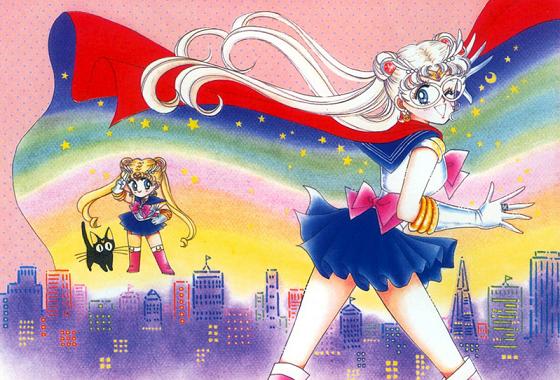
It’s sad that, though the anime series does follow the basic formula of the manga, major plot devices (Beryl’s hidden love of Endymion, Queen Nephrila possibly being Queen Serenity’s sister) are left out and replaced with more focus on action. Considering each Sailor Moon season (story arc) was roughly 21-23 episodes, there was plenty of time that could have been devoted to plot and character development. Instead, the majority of a season consisted of “filler” episodes (some focusing on characters that have little impact on the actual plot), and ends up compressing the pivotal moments of the story into 5-6 episodes. This was most noticeable in the second season (“Black Moon” arc), where the first half of the animated season had an original storyline (“The Doom Tree” arc) that had little to no effect on the later (manga-connected) plotline.
The tone of the animated series is considerably lighter than the manga, with bad guys being “turned to good,” or making their deaths more “soft.” This is not so in the manga, where every villain meets an untimely end, characters flat out die (including Moon and her gang), and Sailor Moon oftentimes has to fight her friends in a brutal fashion. People are stabbed, blood is seen, and there is suffering. The animated series was geared likely to a slightly younger audience (even with its few adult themes peppered in), while the manga was more for teenagers.

One major change that was quite unique in the anime was involving the fifth arc and the Starlights. In the manga, the Starlights are Sailor Senshi (Scouts) from another planet, who come to Earth to find their Princess, Kakyuu. To find her, these three females pose as male pop stars (what better way to be found by your hidden princess than to be a pop star?). In the anime, the Starlights ARE male pop-stars (as in, physically male), who do a quick gender change when they transform into their Senshi/Scout attire. The only explanation I had was that the anime wished to not recycle the “woman pretending to be a guy” bit (which is done often by Sailor Uranus/Haruka), and wanted to do something different. Can’t say it didn’t make for an interesting fifth season.
It’s important to state that the final season of Sailor Moon (titled Sailor Stars) focuses mainly on the Sailor War. Things come to a head with their greatest villain (think “The First” from the final season of Buffy the Vampire Slayer). The anime only begins to focus on this storyline after a brief original story arc involving Queen Nepherlia (the villain of the previous arc). The manga hits the ground running, and effectively goes through the entire story within three volumes. The anime lingers, focusing again on filler episodes, and rush jobs the ending. The final battle of Sailor Moon verse the ultimate evil is over before it begins, while in the manga, Sailor Moon fights a mass of original Sailor Senshi (including her own friends), and has a revelation at the end that is so mind boggling you have to re-read it to even get a hint of the impact the story implies. Again, the anime watered this down for the kiddies, also removing the impact of what had just occurred.

Overall, the adaption of manga to anime was sufficient, allowing the anime a few thrills of its own, but left out some of the good meat of the manga. The bonus is, the anime is just flat out enjoyable! Even if it’s not as powerful as the manga, it’s just fun!
Check out the next Adaptation Analysis, where we’ll look at a classic horror franchise that hit the stage… with a splatter zone included!


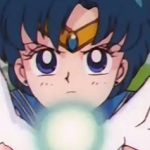
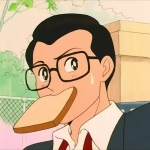
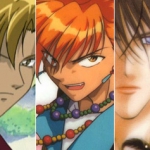
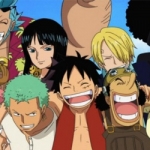
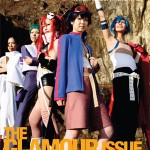
They should also analyze Sailor Moon Crystal. It was literally made based on manga.
Who is the author for the aisle moon illustration of her with white-is hair and the white eye-mask? What is this version of Sailormoon called?